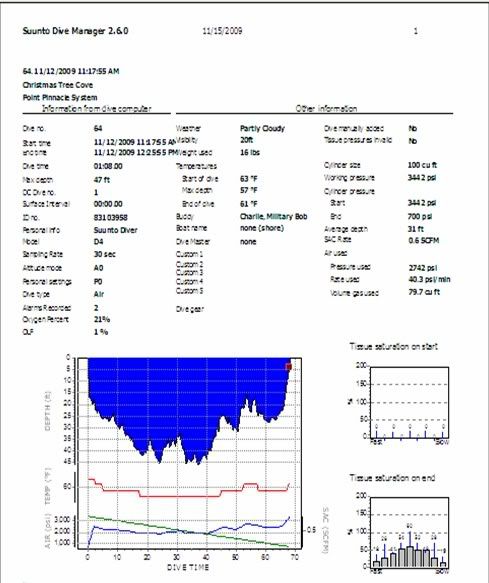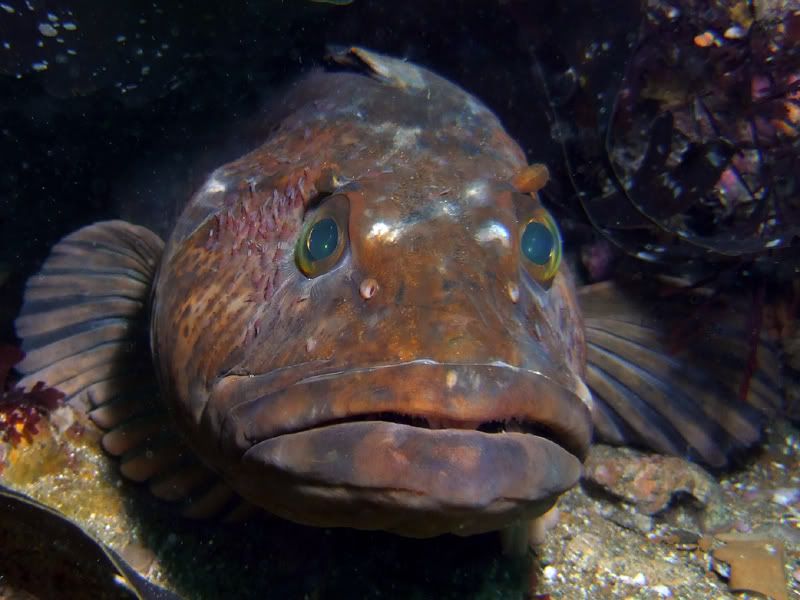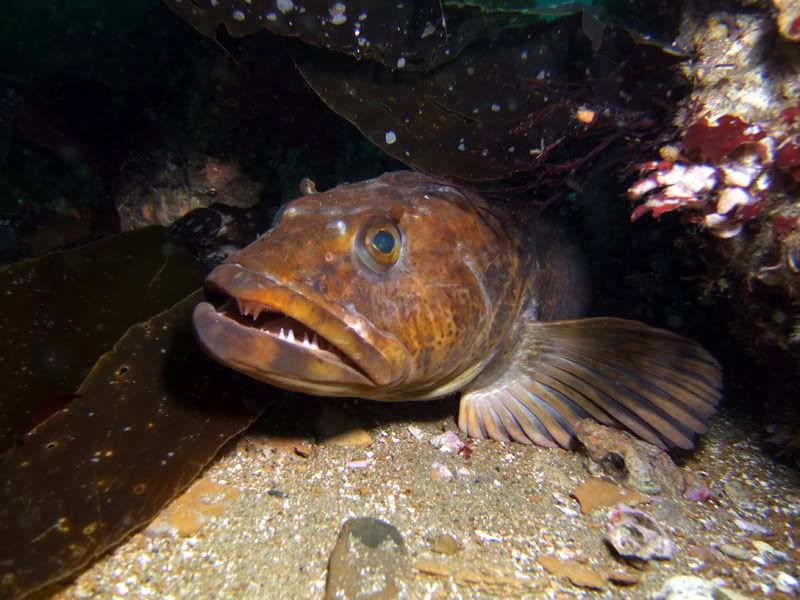FrankPro1
Contributor
After looking over Ross Overstreet's bathymetric maps the night before, we decided to try a new dive pattern at Christmas Tree cove. The plan was to start our dive on the far outer kelp bed, take 220 degrees to 50-55ft and then angle over towards the point at 140 degrees. This would put us directly in line with what appears on Ross's map to be a large series of underwater pinnacles. Well we didn't get as far as 50-55ft because while we were on our 220 degree heading we came across the motherload. At about 30ft we hit a decent size pinnacle, we followed the edge of it down and around to about 40ft. This brought us to a massive structure which dropped down to the 55-60ft range but went up to about 10-15ft. This is by far some of the largest reef structure I've encountered on the Palos Verdes peninsula "Only second to some of Neptune's Pinnacles". With Military Bob ahead of me and SpkelpDiver behind we cruised the 40ft line of the reef, shining lights into crevices and overhangs, looking for that elusive nudi or entrenched moray. Bob found a massive fish, it must have been close to 4ft-4.5ft long and tail first into a hole. With some bugs surrounding its face and its gaping mouth and deep black eyes staring back at me, I thought to myself "What a dive not to bring the camera". Looking over some field guides, the general consensus was that it must have been a LingCod. But can LingCod get that big? I've only seen a few LingCod before and they were always much more thin and at most 1-2ft. This area is full of life. Lots of Cadlina's, Yellow Dorids, Cabazon, Rockfish, Bugs, a Scorpionfish and two very large adult Sheephead. Usually when I've encountered such large Sheephead, they tend to stay right outside of my direct sight, just cruising the line of visibility. These two came in real close to inspect us, again regretting not bringing the camera. A gently sloping edge with scattered reefs dropping down to a thinly knit kelp forest marked our return point. Our reciprocal heading lie between 0-30 and shot us back into the cove for a challenging low tide exit.









